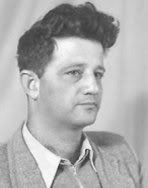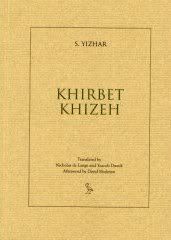Khirbet Khizeh by S. Yizhar
 Khirbet Khizeh by S. Yizhar
Khirbet Khizeh by S. Yizhar
This 1949 novella about the violent expulsion of Palestinian villagers by the Israeli army has long been considered a modern Hebrew masterpiece, and it has also given rise to fierce controversy over the years. Published just months after the end of the 1948 war, Khirbet Khizeh (the “kh” pronounced like the “ch” in “Bach”) was an immediate sensation when it first appeared. Thousands of Israeli Jews rushed to read it, the critics began to argue about it, and a Palestinian journalist in Nablus described it as a sign that the Israeli army had a conscience and that peace was possible.
Since then, the book has continued to challenge and disturb. The various debates it has prompted would themselves make Khirbet Khizeh worth reading, but the novella is much more than a vital historical document: it is also a great work of art. Yizhar’s haunting, lyrical style and charged registration of the landscape are in many ways as startling as his wrenchingly honest view of one of Israel’s defining moments. Despite its international reputation, the book has never before been translated into English. Nicholas de Lange and Yaacob Dweck’s expert rendering captures with grace Yizhar’s elusive prose, while David Shulman’s afterword makes the book’s contemporary relevance powerfully clear. Khirbet Khizeh is an absolute must for anyone interested in Middle Eastern literature and history.
See also Economist review
 THERE is a myth that once upon a time no Israelis had moral qualms. Only after years of occupying the Palestinians, and after the series of books by revisionist Israeli historians that began appearing in the late 1980s, did Jewish Israelis start opening their eyes to the destruction that they themselves visited on another people in their attempt to create a refuge from the vast evil done to them. It is astonishing, therefore, to read the novella “Khirbet Khizeh”, just issued in English by Ibis Editions, a tiny non-profit house in Jerusalem dedicated to the translation of obscure gems.
THERE is a myth that once upon a time no Israelis had moral qualms. Only after years of occupying the Palestinians, and after the series of books by revisionist Israeli historians that began appearing in the late 1980s, did Jewish Israelis start opening their eyes to the destruction that they themselves visited on another people in their attempt to create a refuge from the vast evil done to them. It is astonishing, therefore, to read the novella “Khirbet Khizeh”, just issued in English by Ibis Editions, a tiny non-profit house in Jerusalem dedicated to the translation of obscure gems. First published in 1949, a year after the declaration of independence and 57 years before the publication of “The Ethnic Cleansing of Palestine” by Ilan Pappé, perhaps the most controversial of Israel's historians, “Khirbet Khizeh” describes in detail one such act of ethnic cleansing. It is based on the experiences of its author, S. Yizhar (pen-name of Yizhar Smilansky), who was an intelligence officer in the newborn state's army. Blowing a further hole in the myth is the news, learnt from the helpful afterword by David Shulman, a peace activist, that the book has long been an optional text in the official Israeli school curriculum.
In the story, a squad is detailed to clear a Palestinian village that has remained on the Israeli side of the 1949 ceasefire line and pack its residents off in trucks with only the clothes on their backs (Benny Morris, an Israeli historian, has calculated that of 369 Palestinian towns and villages in what became Israel, at least 41 were forcibly evacuated, and in at least 228 the residents fled under attack by Zionist forces). When the narrator, his mind ringing with thoughts of how Jews were exiled by their persecutors, blurts out a protest, one of his comrades retorts: “Are we killing them? We're taking them to their side. Let them sit there and wait. It's very decent of us. There's no other place in the world where they'd have been treated as well as this.”That quotation sums up why, despite being a school text, and despite the historians' efforts, “Khirbet Khizeh” is not central to the national consciousness. The whatever-we-did-we-suffered-worse rationale has allowed most Jewish Israelis to draw a veil over the sins of the state's early years, even as their misgivings about the post-1967 occupation of the West Bank and Gaza have grown.
Available in the US from Small Press Distributors. Elsewhere on the world see Ibis Editions website.